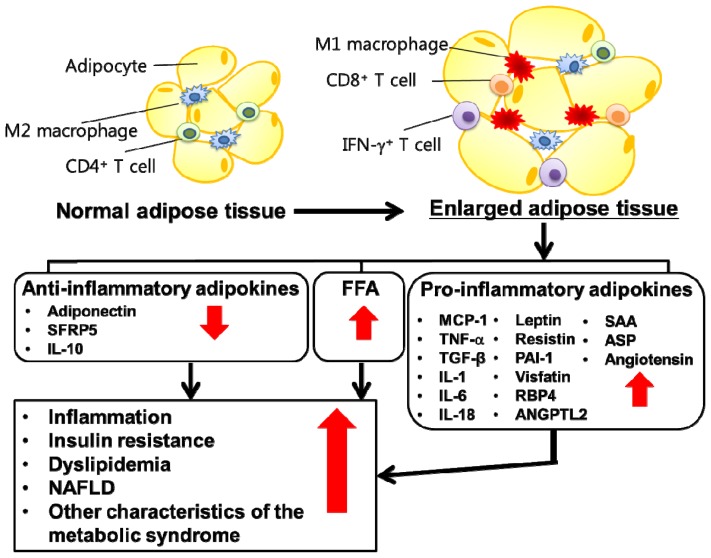Figure 2.
Secretion of inflammatory adipokines from adipose tissue in obese state. In obese state, the enlarged adipose tissue leads to dysregulated secretion of adipokines and increased release of free fatty acids. The free fatty acids and pro-inflammatory adipokines get to metabolic tissues, including skeletal muscle and liver, and modify inflammatory responses as well as glucose and lipid metabolism, thereby contributing to metabolic syndrome. In addition, obesity induces a phenotypic switch in adipose tissue from anti-inflammatory (M2) to pro-inflammatory (M1) macrophages. On the other hand, the adipose production of insulin-sensitizing adipokines with anti-inflammatory properties, such as adiponectin, is decreased in obese state. The red arrows indicate increased (when pointing upward) or decreased (when pointing downward) responses to obesity. ANGPTL, angiopoietin-like protein; ASP, acylation-stimulating protein; IL, interleukin; MCP-1, monocyte chemotactic protein; NAFLD, nonalcoholic fatty liver disease; PAI-1, plasminogen activator inhibitor-1; RBP4, retinol binding protein 4; SAA, serum amyloid A; SFRP5, secreted frizzled-related protein 5; TGF-β, Transforming growth factor-β; TNF-α, tumor necrosis factor-α.

